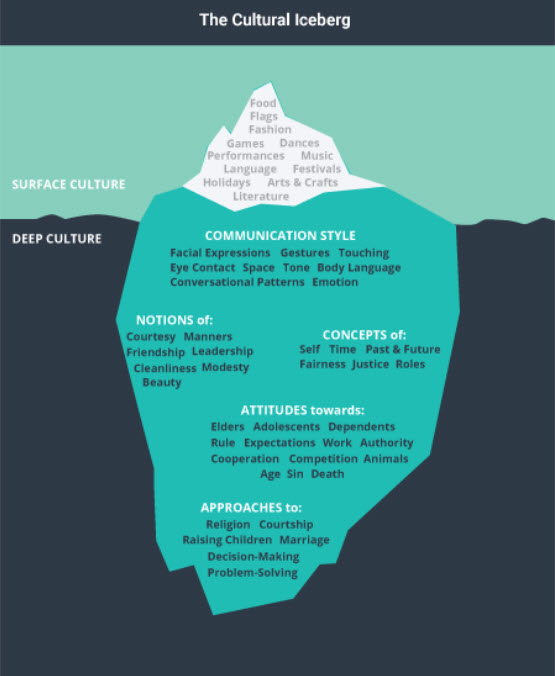29 What is Intercultural Communication? (3.2.1)
Venecia Williams; Nia Sonja; and Verna Johnson
Intercultural Communication in the Workplace
It is difficult to discuss effective communication in the workplace without mentioning intercultural communication. We often think this means conversations between people from different countries, but culture can vary even within the same country. People from different provinces, communities, or even departments in a company may communicate differently. Factors like geography, education, language, and social background all shape how we share information and work together.
Every organization has its own culture, and within that culture are subcultures. For example, the sales and accounting teams might use different language, focus on different goals, and interact differently with customers. Each group develops its own style, shaped by its work environment and its members’ backgrounds.
Culture goes beyond things like food or clothing. It also includes how we think, what we value, and how we expect others to behave. These expectations influence how we speak, write, and react with gestures or expressions.
Defining Culture
Culture is made up of shared values, beliefs, and behaviours that are passed between members of a group. These behaviours shape what a group sees as the “right” way to think and act.
You can think of culture in five key ways:
- Culture is learned.
- Culture is shared.
- Culture is dynamic (it can change over time).
- Culture is systemic (it affects all parts of our lives).
- Culture is symbolic (we use language and other symbols to express it).
A helpful way to picture culture is as an iceberg (See Figure 4.1 below). The tip of the iceberg shows things we can easily see, like clothing, language, or holidays. But most of the iceberg is hidden under the surface. This includes values, beliefs, and thought patterns that strongly affect how people interact.

Intercultural, Cross-Cultural, and Multicultural Approaches
These three terms are often used interchangeably, but they mean different things:
Multicultural
This means people from different cultures are present together. A multicultural workplace might celebrate diversity with food, music, or events, but deeper inclusion issues may not be addressed.
Cross-cultural
This approach focuses on being polite or respectful when people from different cultures interact. It may involve learning customs or greetings. However, it can still lead to stereotypes if we don’t go deeper.
Intercultural
This is a deeper level of understanding. Intercultural communication means making a real effort to learn about other cultures and reflect on our own. It can be challenging but often leads to stronger relationships and more inclusive workplaces.
Why It Matters
When we meet someone new, we notice both similarities and differences. While both are important, it is often the differences that lead to misunderstandings. We may put people into “in-groups” or “out-groups” based on these differences. When this happens, we may react based on group stereotypes instead of seeing the individual.
This kind of thinking can create barriers and even lead to conflict. That’s why developing intercultural communication skills is important—they help us become more respectful, thoughtful, and effective in the workplace.
Attribution
This chapter contains material taken from Chapter 1 .4 “Intercultural Communication” in Fundamentals of Business Communication Revised and is used under a Creative Commons Attribution-ShareAlike 4.0 International License.
References
References are at the end of this chapter.

